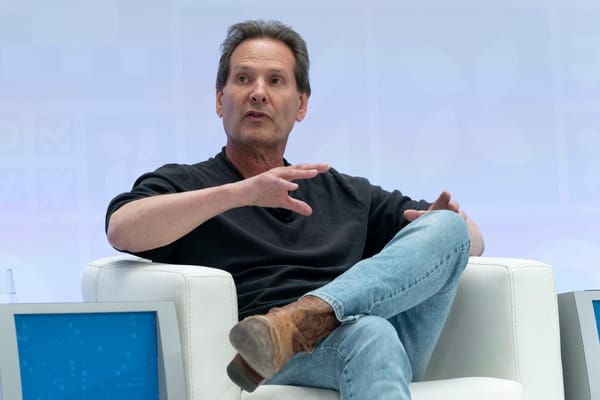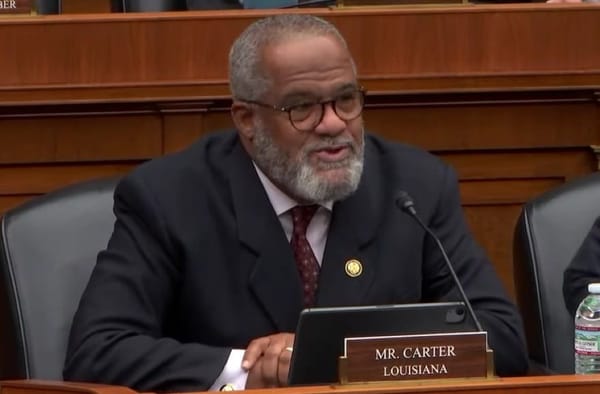Measuring Broadband Use and Adoption is the Next Frontier in Internet Data Collection
SPRINGFIELD, Illinois, August 9, 2011 – It’s very easy to take broadband for granted. People want to go online to look up answers on Wikipedia, to watch movies on Netflix, to hang out on Facebook, or to Skype cousins across the globe — or across town. None of this can be done without broadband. Hig
Drew Clark, Expert Opinion
SPRINGFIELD, Illinois, August 9, 2011 – It’s very easy to take broadband for granted. People want to go online to look up answers on Wikipedia, to watch movies on Netflix, to hang out on Facebook, or to Skype cousins across the globe — or across town.
None of this can be done without broadband. Higher and higher speeds of internet connectivity are necessary to satisfy everyone’s demand to do all of these things at once.
That’s where the Partnership for a Connected Illinois comes into play.
We are a resource and a key piece in the puzzle about how the broadband landscape in Illinois is changing for the better.
We work with broadband providers of all stripes – fiber, cable, copper and wireless – to help raise awareness of the fact that Better Broadband leads to Better Lives.
We work with State entities like Gov. Pat Quinn’s Broadband Deployment Council, and with local governments and “anchor institutions” that are crucial hubs in connecting up to internet spokes.
And we work with consumers. These include everyday residents of rural Illinois, of Chicago, and of everything in between. Equally important are the business customers. Powered by broadband in Illinois, these business customers need better broadband to stoke job creation and economic growth.
Getting a Handle on Broadband Needs and Demands
Our Broadband Illinois web site reflects our mission to collect and publish broadband data, to promote high-capacity infrastructure and access, and to maximize the impact and use of broadband.
Data and research provides the benchmark for measuring the health and growth of Illinois’ broadband networks. Under the U.S. Department of Commerce’s State Broadband Initiative, the Partnership for a Connected Illinois has been collecting and publishing broadband data. We make it easy for consumers to find out more about their broadband connectivity, and about the “anchor institutions,” or community broadband hubs, nearby.
And our Broadband Illinois web site has been publishing information about broadband providers’ service areas and offerings, together with the speeds at which they advertise those services.
We’ve had higher ambitions. The Partnership for a Connected Illinois is about to take a key step toward the next frontier in internet data collection.
That frontier is studying broadband use and adoption.
Figuring out where broadband providers offer service, and the speeds and quality of that service, are only the first stage. Now it’s time to rigorously evaluate what drives adoption, what powers higher-demand connection, and how broadband can create top-performing businesses, hospitals, schools, cities and county governments.
We know that broadband is a big piece of the puzzle. But quantifying how big it is, and understanding its dimensions and parameters, requires careful preparation.
That’s why I’m so pleased that John Horrigan, perhaps the nation’s premier expert in research on broadband adoption and demand, has agreed to advise us on the right way to study broadband use and adoption. For more than a decade, John conducted broadband adoption survey research for the Pew Internet & American Life Project. Additionally, he was responsible for conducting a comprehensive survey that was part of the Federal Communications Commission’s National Broadband Plan.
Wednesday Webinars, and Today’s Bidder’s Conference Webinar
Beginning three months ago, the Partnership for a Connected Illinois initiated a series of four Wednesday webinars.
These webinars were on the topics of The Illinois Broadband Map (

PDF), Developing Statewide Baseline Data for Research (

PDF), Community Anchor Institutions and Broadband (

PDF), and the our eTeams and Broadband Research (

PDF).
Through each of these webinars, we have systematically explained the operations of our Data and Research Team. We explained the data-collection processes that we undertook to collect, clean, process and submit data from Illinois providers to the National Broadband Map.
We’ve also laid out the need for, and invited feedback on, the survey research methodology for collecting statewide baseline data. We’ve also zeroed in on our Community Anchor Institution data-set, and the work we are doing, through eTeams, to partner with institutions and individuals who have deep roots in particular regions of the State.
All of this work has set the stage for the Request for Proposals, issued on July 15, 2011, by the Partnership for a Connected Illinois. (We’ve also received many questions on the RFP, and have replied to them on this page.
Applications for this RFP are due on Friday, August 26, 2011. We are encouraged by the interest and energy generated thus far by our RFP.
In order to address any questions or receive additional feedback on a level playing field, we’ve established a Bidder’s Conference Webinar today, on Tuesday, August 11, at 2 p.m. CT.
John Horrigan will be the lead participant in Bidder’s Conference Webinar today, at 2 p.m. CT, together with the staff of the Partnership for a Connected Illinois responsible for this statewide baseline inventory of broadband use and adoption. If you are interested, please register to attend.
Piecing Together Broadband Supply and Broadband Demand
In addition to the data-collection activities, our Wednesday Webinar series, and the RFP described above, the Partnership for a Connected Illinois is putting the finishing touches on an important new study, “Scoping Broadband Access in Illinois.”
This study examines the broadband data collected and processed by our data team, comparing it to multiple additional data sources, including speed tests provided to us by the FCC. PCI plan to release this study later in the week, and which we hope will be a valuable resource to partners and other organizations in Illinois, and throughout the county, who are interested in diving deeper into broadband data.
One of the most exciting pieces about the study, “Scoping Broadband Access in Illinois,” is its county-by-county comparisons of broadband speeds and coverage from multiple data sets.
And in the future, as PCI receives proposals responding to our RFP for baseline broadband demand, we expect to be able to refine the measures of broadband readiness — and to help counties and regions get the greatest impact from broadband investments.
After all, broadband should be taken for granted. Think of that the next time you get ready to Skype your cousin or post a status update on Facebook.
This Expert Opinion originally appeared on Broadband Illinois, at http://broadbandillinois.org/news/46. “On Broadband” is the column written by Drew Clark, Executive Director of the Partnership for a Connected Illinois.










Member discussion